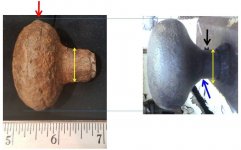invent4hir
Bronze Member
- Aug 1, 2017
- 1,687
- 2,547
- 🏆 Honorable Mentions:
- 2
- Detector(s) used
- Whites V3i & DFX
- Primary Interest:
- All Treasure Hunting
All, I’ve been detecting the former home site of an officer who served during the War of 1812. When he wasn’t serving in the military or as a civic leader, he worked as a blacksmith. He built the home in the early 1800s and lived there until his death in 1850. The home had been occupied on and off up until the 2000s.
Near the home I found this rusty door knob with no fancy design or markings. I searched TNet but didn’t find a close enough match and descriptions on the internet focus mostly on either more decorative and/or finer quality door knobs.
So, do you think it dates before 1850 or later? Reason for asking is that I intend to include it in an educational display case that will be donated to the local historical society.
Near the home I found this rusty door knob with no fancy design or markings. I searched TNet but didn’t find a close enough match and descriptions on the internet focus mostly on either more decorative and/or finer quality door knobs.
So, do you think it dates before 1850 or later? Reason for asking is that I intend to include it in an educational display case that will be donated to the local historical society.


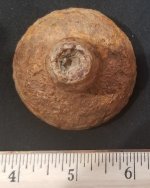
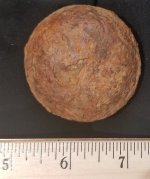
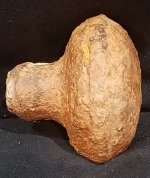
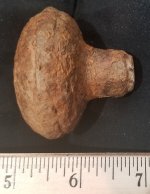
 After doing the original post, I went back and read more about the extensive interior remodeling done to the home in the late 19th & early 20th centuries. One of the styles used in the remodeling was the Bungalow style, which features simplicity. So, this simple door knob could possible be original to the home or added as part of the remodel. Will keep researching.
After doing the original post, I went back and read more about the extensive interior remodeling done to the home in the late 19th & early 20th centuries. One of the styles used in the remodeling was the Bungalow style, which features simplicity. So, this simple door knob could possible be original to the home or added as part of the remodel. Will keep researching. I may try to find some old catalogs to confirm or rule out the door knob was part of the re-model. As a bonus, Part One shows an early 19th century door latch that is similar to one I found at another property.
I may try to find some old catalogs to confirm or rule out the door knob was part of the re-model. As a bonus, Part One shows an early 19th century door latch that is similar to one I found at another property.